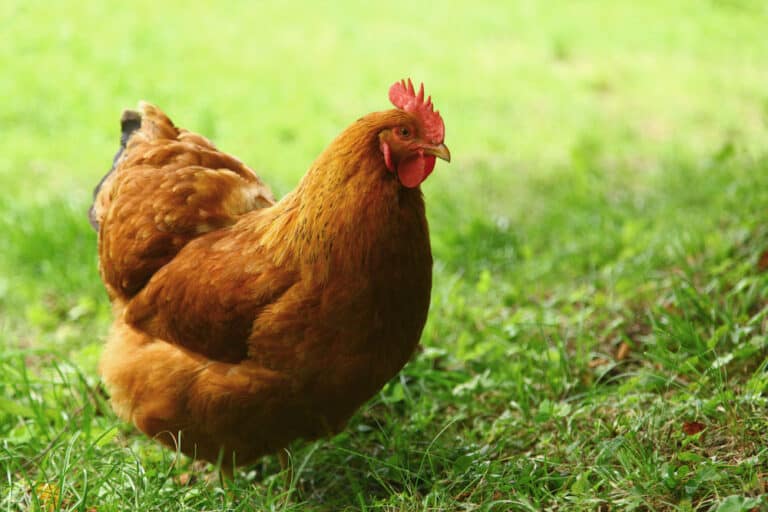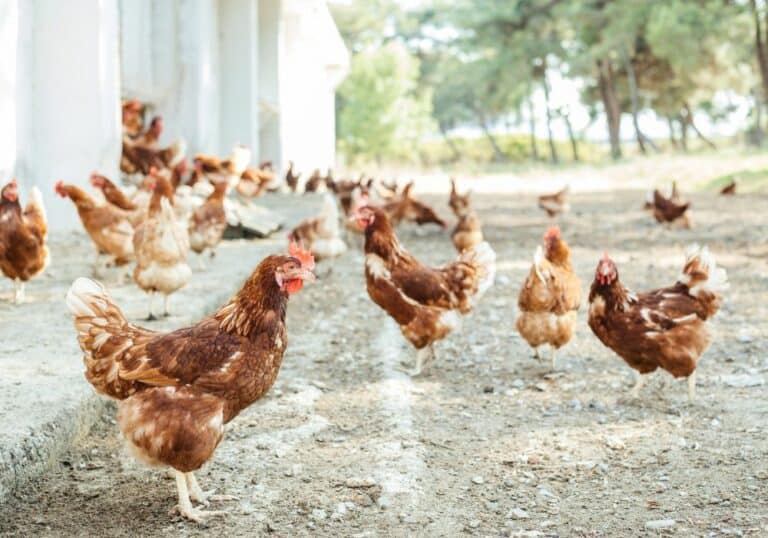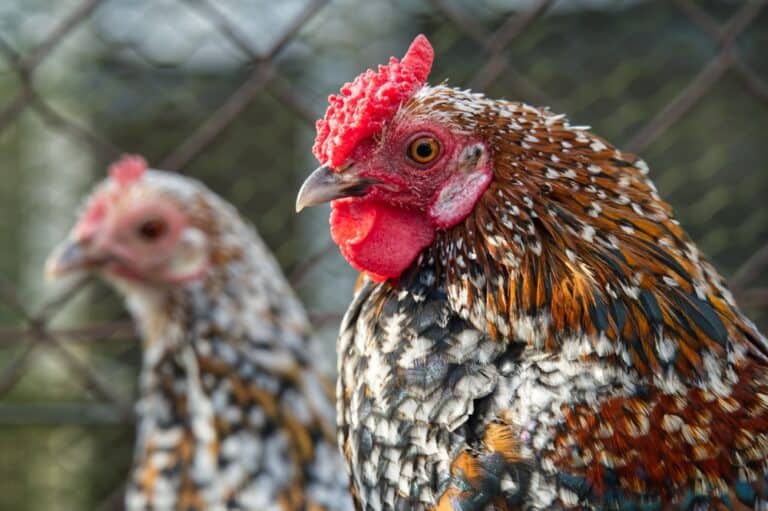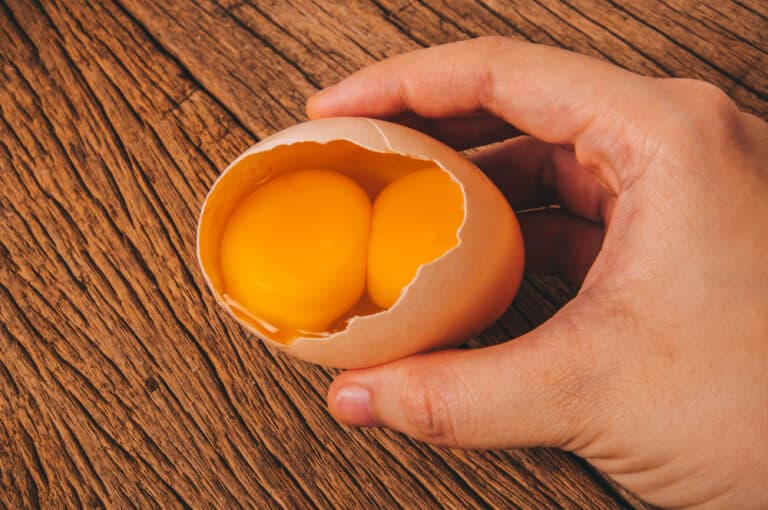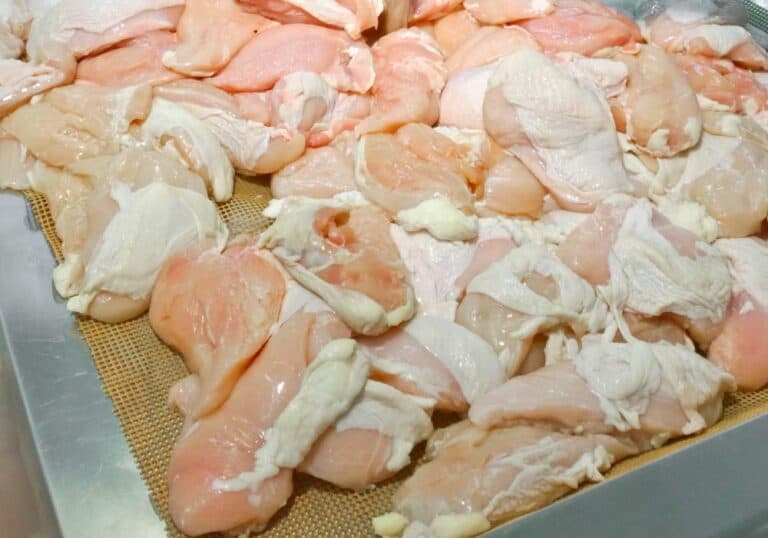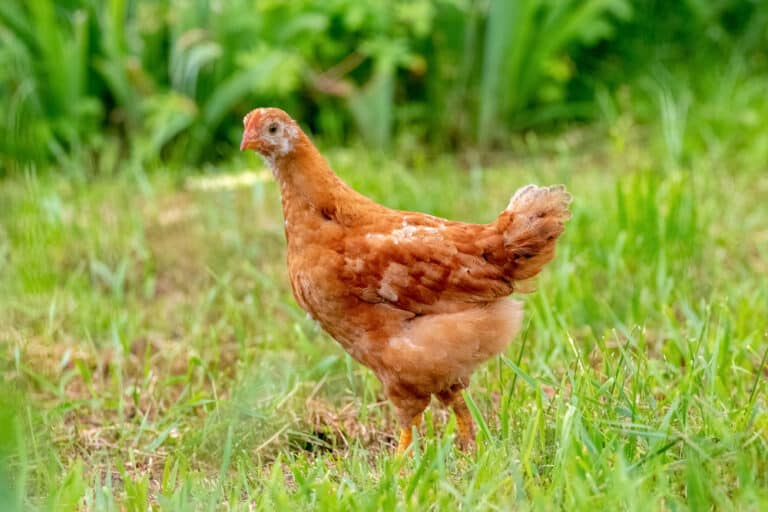What many novice chicken keepers get surprised by is just how complicated of a topic chicken coop bedding materials can be. It sounds like something that should be simple, yet, once you dig into it, chicken bedding has seemingly countless aspects and characteristics that can’t all be satisfied at the same time.
So, what is the best bedding for chickens? Is it straw, wood shavings, sand, or anything else? Below, we’ll explore the over 20 different contenders, the various factors a good chicken bedding needs to fulfill, and how one correlates with the other.
What is chicken bedding?
The best bedding for chickens is the one that keeps your poultry birds as clean, safe, comfortable, and hygienic as possible while also being easy for you to manage, clean, and change. This can sound simple at first, however, it’s just a broad-stroke description of the various factors that go into choosing and managing a chicken coop’s bedding.
In fact, what even is chicken bedding? And how does it correspond to another term you may also have heard – chicken litter?
Chicken bedding vs chicken litter
The juxtaposition between these two terms is a huge reason why many people get confused by this topic. And, sadly, while we can clear out the confusion here, we can’t change how people talk about these two things.
So, what is chicken bedding and what is chicken litter?
Chicken bedding
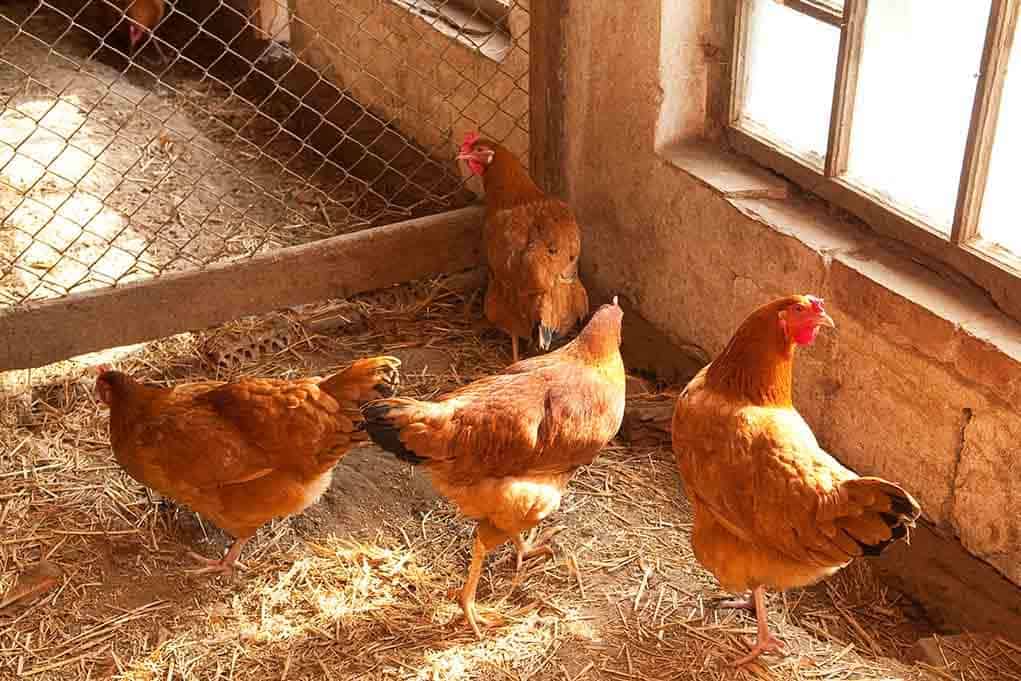
In principle, chicken bedding is the flooring layer in factory farm poultry houses – it’s the only bedding option chickens have, it’s where they sit, sleep, and it’s also where they relieve themselves. If that sounds disgusting, it’s because it is.
It’s also absurdly unhygienic but that’s one of the several reasons why factory farm chickens are fed antibiotics on a daily basis. It’s thanks to those antibiotics that food supplements that factory farm chickens are able to survive up to a couple of months of age before they get “processed” for their meat. Needless to say, this whole scenario is not an option for your backyard chicken flock.
Chicken litter

Chicken litter, on the other hand, is the flooring homestead and backyard chicken keepers are supposed to put on the bottom of their chicken coop. It’s the surface that chicken droppings are supposed to fall in and be cleaned off of and it’s also where chickens will occasionally walk over.
The difference here, however, is that chicken litter isn’t what your chickens are going to spend all or most of their life on. Backyard chicken coops still have nesting boxes for the hens and their eggs, separate feeder and watering areas, an outdoor chicken run for exercise, chicken dust baths for hygiene, and so on.
In other words, while “chicken litter” sounds like the less hygienic option – it literally sounds like cat litter – it’s actually what we mean when we talk about the “chicken bedding” of backyard chicken coops.
So, let’s go over what are the best choices for chicken bedding and what are the factors that make a chicken bedding/litter good next.
What are the 20+ choices for chicken bedding most people ponder?
Obviously, there are lots of things you can put on the chicken coop floor, some better than others. Let’s go over the main contenders:
- Play sand or fine sand – has low pathogen and insect levels but it’s too fine for chickens and may cause pneumoconiosis and even cancer.
- Medium sand – low pathogen and insect levels, safe, non-flammable, easy to clean, great water evaporation, but not great for composting.
- Coarse sand with gravel and rocks – low pathogen and insect levels, very difficult to clean, and sharp edges may hurt chickens’ legs.
- Chopped straw – high water absorption, low dust (depends on the brand), but harbors pathogens, is highly flammable, and has poor evaporation.
- Hemp beddings – highly absorbent with low mold levels, but harbors bacteria very easily.
- Hay – high water absorption, but poor evaporation and often harbors bacteria.
- Pine shavings – great compost, insulation, and absorption, plus it’s lightweight but has toxic pine extractives and is extremely flammable.
- Cedar shavings – very absorbent and great winter insulation but highly flammable and has toxic cedar extractives.
- Hardwood shavings – excellent compost, insulation, and ease of use but highly moldy and very flammable.
- Aspen shavings – very absorbent, lightweight, and makes for excellent compost but aspen extractives can be mildly toxic to chickens.
- Mulch or wood chips – low on dust and highly absorbent but doesn’t release water well and is prone to developing mold.
- Sawdust – good insulation, composting, and absorption but is way too dusty for chicken bedding.
- Tree bark – low on dust and offers good absorption but is very prone to molding, has splinters, and “waste caking” is extremely annoying.
- Peat moss – low pH levels are good for low ammonia levels (at first) but has lots of dust and develops mold and bacteria over time.
- Rice hulls – decent release of moisture but very poor absorption and develops lots of mold over time.
- Corncobs – pretty absorbent but has lots of mold and bacteria over time.
- Peanut hulls – decent moisture evaporation but high on ammonia and mold.
- Grass clippings – chickens tend to enjoy this bedding at first but it develops very high levels of bacteria and mold over time.
- Pine needles – lightweight and easy to work with but cakes very easily and is incredibly flammable.
- Leaves – lightweight and easy to work with but develops lots of mold and bacteria.
- Newspaper clippings or other shredded paper products – less bacteria and endotoxins than wood shavings but leads to lots of mold and ammonia gas.
What makes bedding great for chickens – the 12 main criteria

When looking for the best bedding or litter for chickens, we have to look at multiple criteria. Sadly, there isn’t a single type of bedding that is “best” at satisfying all of these criteria at the same time – some beddings are better at some things and worse at others.
This means that chicken keepers should understand the pros and cons of every type of bedding and figure out which cons are easier for them to deal with and which pros are what they are looking for the most.
For example, some beddings offer great insulation from the summer’s heat but don’t insulate well against the winter’s cold. Other beddings are the exact opposite – neither is objective “better” than the other but each is better for certain climates.
Plus, it should be mentioned that commercial beddings of the same type can also have different characteristics based on the specific brand that has made them. That’s why a lot of people recommend DIY chicken beddings which isn’t hard to do as seen here.
Below, we’ll list the 12 key criteria you should keep in mind when comparing and choosing the different chicken bedding options:
1. Cleanliness
As we said, when talking about backyard and homestead chicken coops, we should view the chicken bedding more as chicken litter. This means that it needs to be easy to clean as you don’t want your chickens’ excrement to stay on the floor for too long.
And the last thing we want for chicken poop and bedding to get “caked” together, i.e. to get stuck in thick masses.
2. Insulation
We’re usually talking about two things when discussing insulation – keeping the chicken coop cool in the summer and keeping it warm in the winter. The different types of chicken bedding are usually better at one and worse at the other.
For example, straw offers great insulation in winter but is not great in the summer whereas sand keeps the temperatures low in the summer but doesn’t offer any extra insulation in the winter.
So, the choice here depends on what climate you live in. If you want both, however, we’d usually recommend choosing bedding with great summer insulation as it’s often easier to heat up a space than to cool it down.
3. Moisture absorption
Ideally, a good chicken litter bedding should be pretty absorbent. This means that if it gets wet, it should absorb enough of the liquid relatively quickly so that it doesn’t pool up.
4. Moisture release

This is the other side of the “moisture coin” of chicken bedding. This is the speed at which your coop’s chicken bedding will release its moisture in the way of evaporation.
This can seem like the less important of the two factors but it’s actually much more critical than moisture absorption. There are two reasons for this:
- If a bedding type has high moisture release it doesn’t need high absorption as the moisture will be released quickly enough so that it doesn’t build up
- If moisture isn’t released fast enough as is left inside the bedding for too long, that can lead to the development of harmful pathogens
5. Ammonia levels
When cleaning your chicken coop, you may sometimes feel some especially unpleasant odors coming out of the bedding. This will often mean that there’s been an ammonia buildup inside the bedding.
This is normal, to an extent, but can be dangerous at high levels.
This ammonia gas is produced when bacteria break down chicken waste and bedding, so, different types of bedding are less prone to generating ammonia gas than others. This is important as inhaling large quantities of ammonia can give your chickens asthma, bronchitis, and even death.
6. Bacteria load
Having too many bacteria in your chicken coop’s bedding is bad for a myriad of reasons, not just because of the risk of ammonia gas. Needless to say, you need to get chicken bedding that’s as likely to be welcoming to bacteria as possible. Even then, you’d still want to clean your chicken coop regularly but the type of bedding does make a huge difference.
7. Dust release
Having to breathe too much dust can lead to some pretty understandable issues in your chickens’ respiratory system. What’s more, if the chicken bedding is too dusty, chickens will also inhale other toxic and even carcinogenic particles such as fungal toxins, spores, and others with it.
8. Mold load
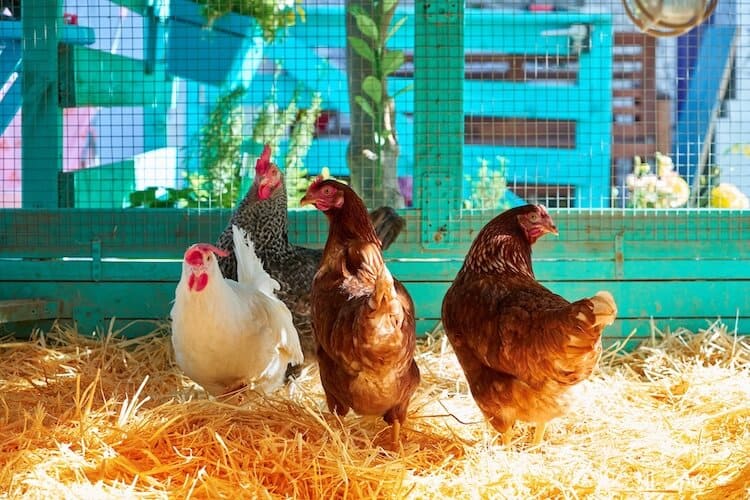
This isn’t the first problem we think about when choosing chicken bedding but once it happens, it’s hard to ignore it. Unfortunately, some types of bedding are very likely to develop mold and others can even come with it right from the store.
9. Ease of use
A lot of the issues above can be minimized not only by choosing the right type of bedding but also by cleaning and maintaining it properly. This can be labor-intensive, however, and not all types of chicken bedding are equally easy to use and work with.
Additionally, this “ease of use” factor has several different aspects too. For example, sand is quite heavier than most other types of bedding which makes it difficult to use. At the same time, it’s simpler to clean than other bedding types.
10. Composting
Something we often don’t think about is what we’re going to do with the excess chicken manure. Just throw it on the compost pile or use it in your garden. Some types of bedding such as straw and wood shavings make it very easy to reuse your chicken waste in the garden while stuff such as sand and gravel can’t really be used as fertilizer.
11. Insect load
Having insect pests crawling in your chicken coop bedding is obviously not a good thing and some types of bedding are much more suitable for insects to thrive in than others.
12. Flammability
Many types of chicken bedding and incredibly flammable which can be a problem, especially if you want to bring a heater in the chicken coop for the winter.
Beddings made of chopped straw, mulch or wood chips are understandably very flammable while stuff such as sand, gravel, and rocks is significantly safer.
So, which chicken bedding is right for you?
For our money, medium sand is the king of the hill when it comes to chicken bedding. It dries very quickly, it’s easy to clean, it isn’t flammable, it’s non-toxic, it keeps the coop cool in the summer, and it’s low on dust, ammonia, insects, pathogens, mold, and other undesirables.
If this isn’t exactly what you’re looking for, however, chopped straw is the second-best option – it has different pros and cons so it’s suitable for different environments and circumstances. All other bedding options pale in comparison to medium sand and chopped straw in our opinion, however.
In conclusion
The type of bedding you choose will have drastic effects on the quality of life, health, and safety of your poultry birds. So, while many people handwave this choice and pick the first type of bedding someone around them suggests, this choice is actually much more significant than it may seem at first.

